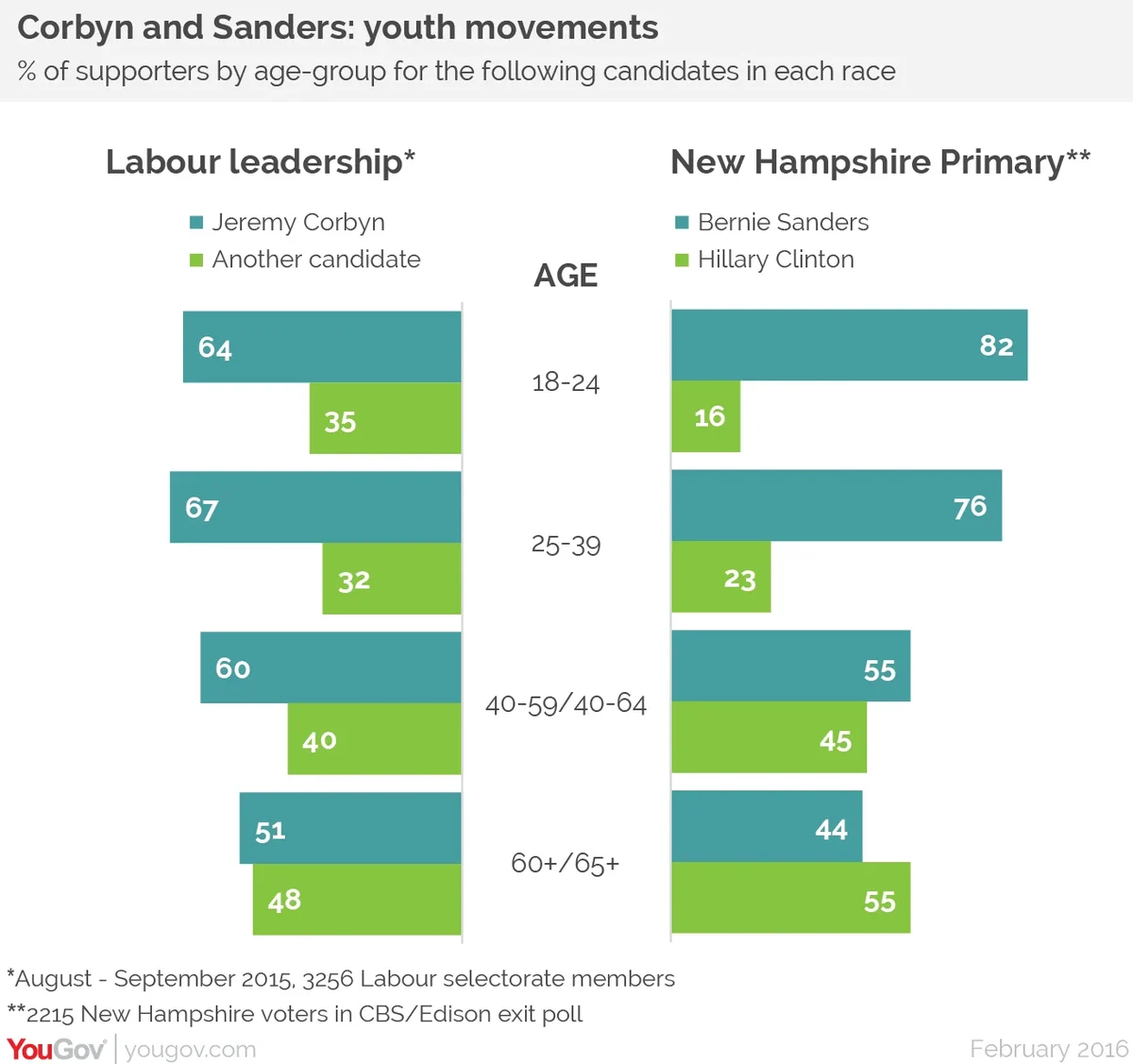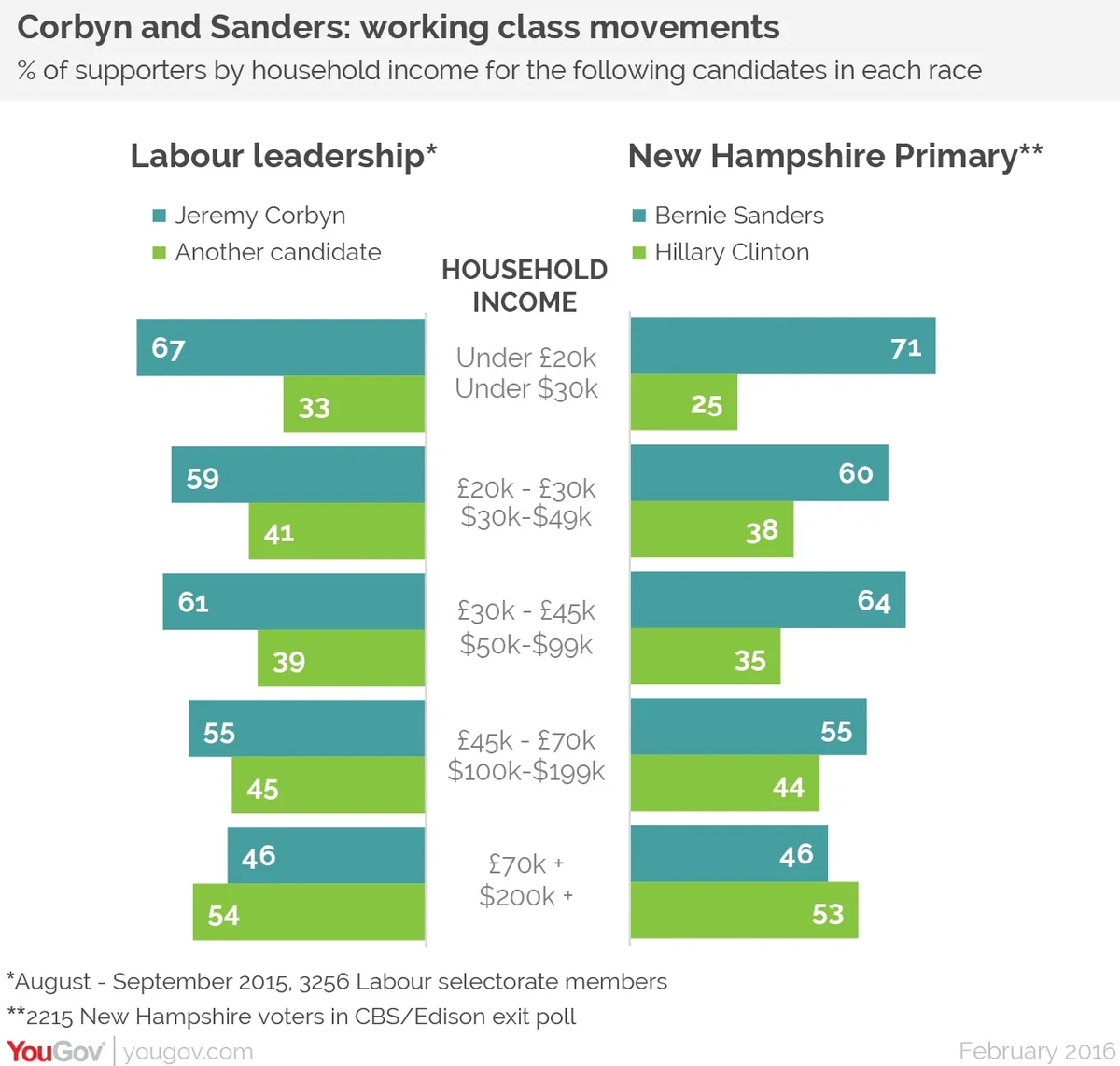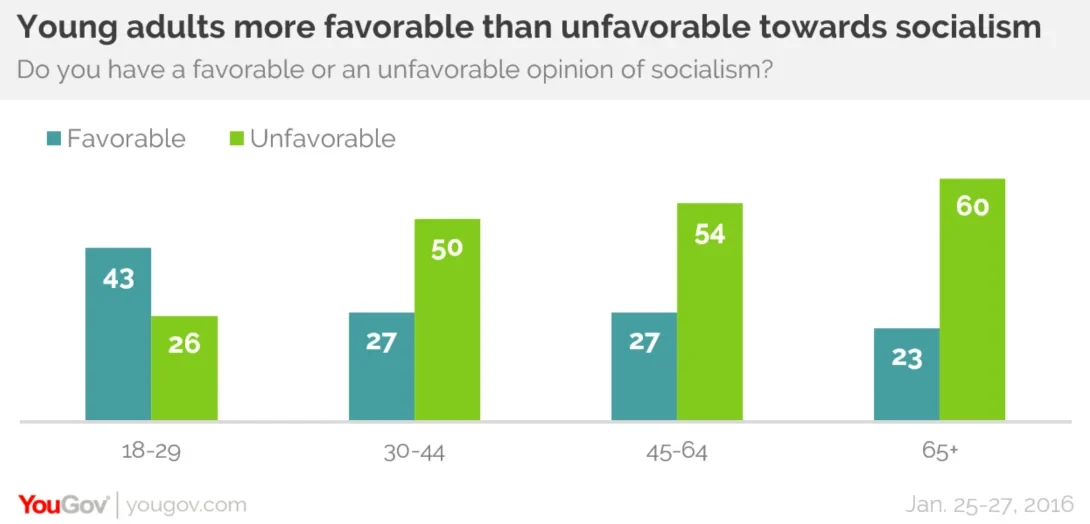The coalition of young idealists and working class left-wingers that propelled Jeremy Corbyn to leader of the British Labour Party is being repeated in the Democratic nomination battle in the US
In 2008, the battle lines were different. The contest between Hillary Clinton and Barack Obama for the Democratic nomination split the Democratic party by demography: the young cool kids were with Barack Obama, along with more educated and more affluent primary voters. Meanwhile Hillary had much stronger support among the white working class and older people. It was the fancy idealist versus the steely pragmatist – and the fight went all the way to the finish line.
Fast forward eight years and the demographic tribes have changed. The young cool kids are once again overwhelmingly choosing the not-Hillary option, in the unlikely form of 74 year old Senator Bernie Sanders, but what’s new (and dangerous for Hillary) is that he is picking up the white working class as well. This time round, the Hillary camp is relying on older people, richer people and minority voters. Whether or not this will turn out to be enough to win the nomination is the big question of the forthcoming campaign.
The similarities between the Jeremy Corbyn and Bernie Sanders phenomena have been much remarked upon. Two grumpy old socialists from the sidelines of politics who have been saying the same thing since the 1980s have suddenly found that, like the decade itself, they’ve come back into fashion. To their own surprise they find themselves being idolised as the standard bearers of a new Leftist movement.
Analysis of their supporter demographics helps explain their success. Last September, there was a popular narrative in the media (and the Labour Party) that Jeremy Corbyn was carried to victory by impressionable social media kids who signed up to be fashionable, not ‘real’ working class Labour Party members. His election was all the fault of the ‘Guardianistas’ and ‘Twitterati’.
But YouGov polling (which forecast the Corbyn victory with great accuracy at the time) revealed that this wasn’t really true. Yes, Corbynmania was a youth movement and a social media movement, but it was also a working class movement. As a group, the Labour ‘selectorate’ that voted in the leadership election was more educated and well-to-do than the population at large, but within that the most ‘normal’ group were actually Corbyn supporters. Only 26% of Corbyn supporters had a household income of more than £40,000, slightly less than the national figure of 27%. (Burnham, Cooper and Kendall supporters were progressively better off at 29%, 32% and 44% respectively). So Corbyn got the cool kids AND the working class left wing.
This is the same coalition that Hillary faced this week in New Hampshire. If you compare exit poll data from the Clinton/Sanders run off this week in New Hampshire with YouGov data on Labour leadership voters in September last year, you see the same patterns. To facilitate comparison between the socialist candidates (Corbyn and Sanders) and establishment candidates (Clinton, Cooper, Burnham, Kendall) I have combined the three non-Corbyn candidates’ votes into a single figure.
First, it’s clearly a battle between generations. The same pattern of older voters being less convinced by the socialist insurgent is evident in both races, and is even more pronounced in the Sanders/Clinton race. The shape is the same, but Clinton should take some consolation from the fact that, where Corbyn won in every age group, the over 65s of New Hampshire rejected Bernie Sanders’ brand of socialism and stuck with Hillary.

Second, in both races the anti-establishment candidates do best with poorer voters. This is different from 2008, when Hillary’s triumphed over Obama in New Hampshire thanks to less affluent voters. Obama’s brand of anti-establishment was more sparkly and aspirational and Hillary was seen by poorer white voters as a more reliable option (helped no doubt by the race issue). This time, like last year’s Labour leadership, only the wealthiest group voted for the establishment option.

Like Jeremy Corbyn last year, Bernie Sanders is being propelled by a potent mixture of the young and connected and the poor and angry. There is a sense in which groups of all ages that would previously have supported a more socialist candidate, had they been a viable option, are being buoyed into supporting them by the strength of this new activist generation.
In both cases, a key enabler of this trend has been the detoxifying of properly Left wing ideas. The word ‘socialism’ itself has become acceptable again, and to the millenial generation it has more to do with Swedish sunshine than Soviet gloom. A recent YouGov study in the US revealed that 18-29 year olds are the only group that overtly favours the term. But there are significant minorities in each of the older generations that also favour the concepts – and they add up.

So far, the groups that has been least susceptible to Bernie Sanders’ message have been black and Hispanic voters - at more than 30% of the electorate they represent Clinton’s back-up plan to stall Bernie Sanders’ momentum. Black voters, a group that overwhelmingly supported her rival last time round, are now key to Hillary’s victory plan.
This is where the comparison with Jeremy Corbyn ends. New Hampshire is much closer racially and culturally to the UK (literally, “New Hampshire” in “New England”) than South Carolina or Nevada, the next states to vote. It seems hard to see how an old white guy from Vermont can resonate with black urban voters who have grown up knowing and liking the Clintons. But even if he doesn’t, his Corbyn-style coalition can take him across the country and looks certain to make this a closer campaign than anyone predicted.
This article first appeared in the Guardian Datablog










